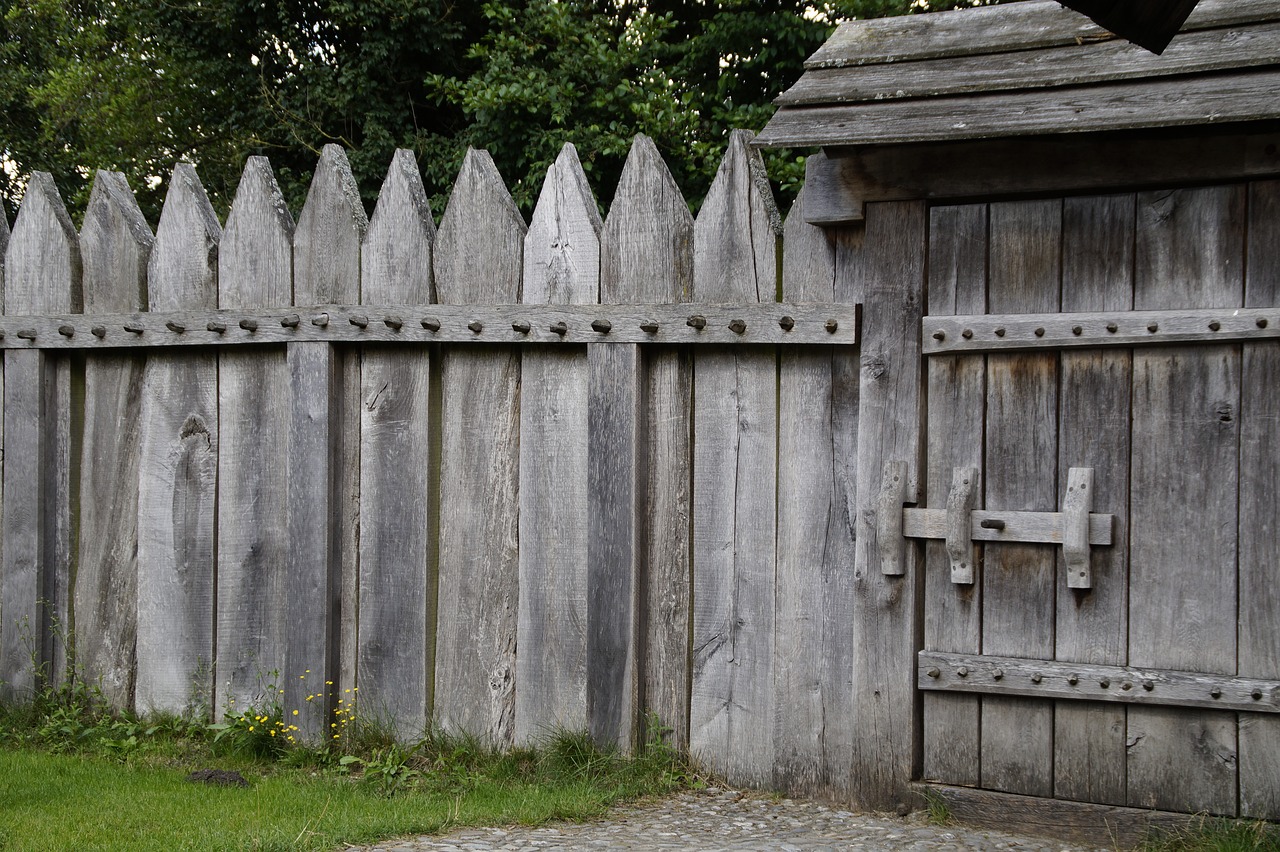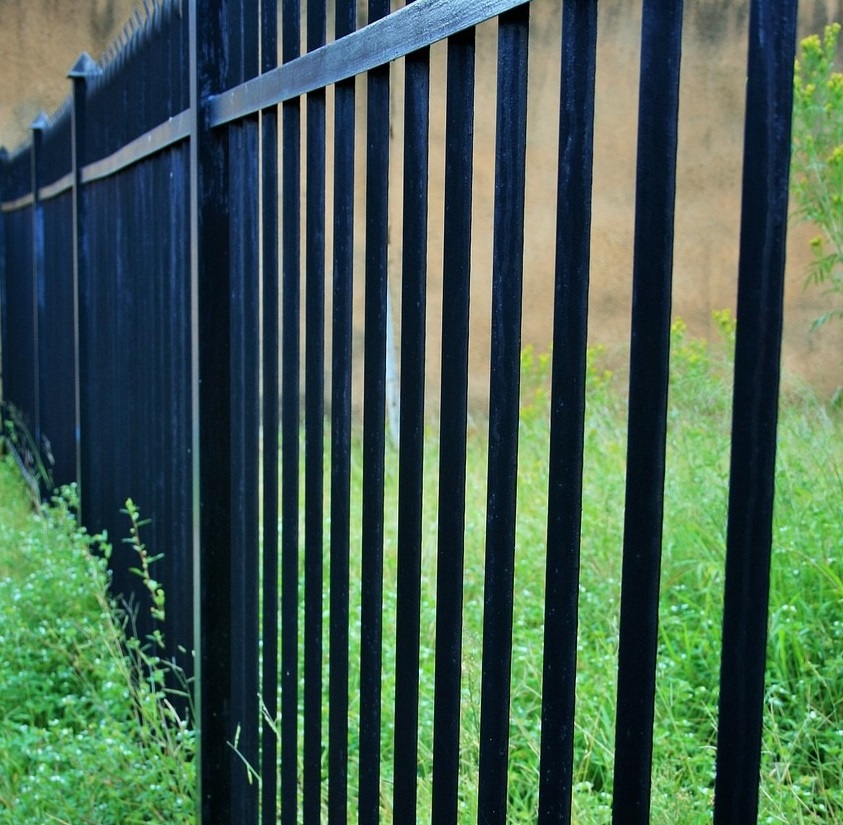Palisade

|
Contents |
[edit] Introduction
A palisade (derr. Latin ‘palus’ meaning stake) is a wall or fence typically comprising individual vertical elements bound together to form a sturdy barrier, usually for the purposes of creating a secure enclosure. Palisades are typically made from timber or metal stakes. The visual effect may be of a wall or fence, depending on whether there are gaps between the uprights.
[edit] Historical use
Historically, palisades were made from tree trunks arranged without gaps and rising up to 4m in height. The tops would usually be pointed like a pencil to create a more effective deterrent. They were quickly and easily built from materials that were often readily available. Because of this, a palisade might have been built as a temporary wall around a castle until a more permanent stone wall could be constructed.
Ancient Greek and Roman military camps would often be encircled by palisades, and such constructions were also common in medieval Germany and colonial America.
[edit] Modern variants

|
Wooden palisade fencing can resemble a traditional picket fence. However, contemporary palisades (pictured above) are just as likely to be made from steel, comprising slender uprights with gaps of less than 100mm between. They are very difficult to climb, provide high levels of security and damage resistance, and have proven popular for schools and on industrial sites.
A typical construction for galvanised steel palisade fences up to 3m high is to have two horizontal rails – an upper and lower – although for taller fences additional rails can be included at higher levels. The uprights (or ‘pales’) are typically fixed to the horizontal rails using galvanised bolts. Special uprights are set into shallow concrete pad foundations at intervals determined by the manufacturer’s specification.
Individual pales are available in various profiles such as W- or D-shaped with spiked heads to provide more effective deterrents.
[edit] Related articles on Designing Buildings
Featured articles and news
Architects, architecture, buildings, and inspiration in film
The close ties between makers and the movies, with our long list of suggested viewing.
SELECT three-point plan for action issued to MSPs
Call for Scottish regulation, green skills and recognition of electrotechnical industry as part of a manifesto for Scottish Parliamentary elections.
UCEM becomes the University of the Built Environment
Major milestone in its 106-year history, follows recent merger with London School of Architecture (LSE).
Professional practical experience for Architects in training
The long process to transform the nature of education and professional practical experience in the Architecture profession following recent reports.
A people-first approach to retrofit
Moving away from the destructive paradigm of fabric-first.
International Electrician Day, 10 June 2025
Celebrating the role of electrical engineers from André-Marie Amperè, today and for the future.
New guide for clients launched at Houses of Parliament
'There has never been a more important time for clients to step up and ...ask the right questions'
The impact of recycled slate tiles
Innovation across the decades.
EPC changes for existing buildings
Changes and their context as the new RdSAP methodology comes into use from 15 June.
Skills England publishes Sector skills needs assessments
Priority areas relating to the built environment highlighted and described in brief.
BSRIA HVAC Market Watch - May 2025 Edition
Heat Pump Market Outlook: Policy, Performance & Refrigerant Trends for 2025–2028.
Committing to EDI in construction with CIOB
Built Environment professional bodies deepen commitment to EDI with two new signatories: CIAT and CICES.
Government Grenfell progress report at a glance
Line by line recomendation overview, with links to more details.
An engaging and lively review of his professional life.
Sustainable heating for listed buildings
A problem that needs to be approached intelligently.
50th Golden anniversary ECA Edmundson apprentice award
Deadline for entries has been extended to Friday 27 June, so don't miss out!
CIAT at the London Festival of Architecture
Designing for Everyone: Breaking Barriers in Inclusive Architecture.
Mixed reactions to apprenticeship and skills reform 2025
A 'welcome shift' for some and a 'backwards step' for others.

























Comments
[edit] To make a comment about this article, click 'Add a comment' above. Separate your comments from any existing comments by inserting a horizontal line.